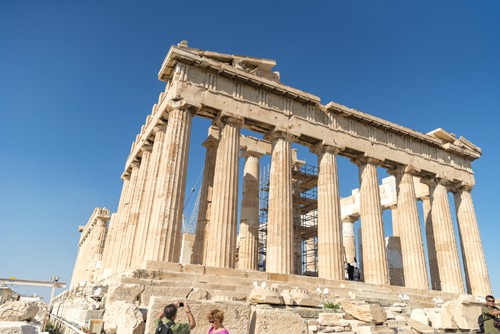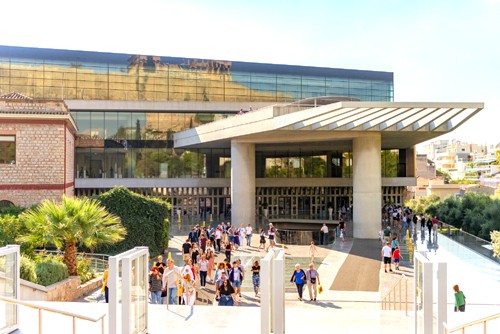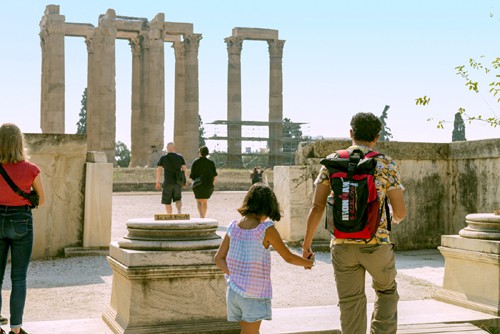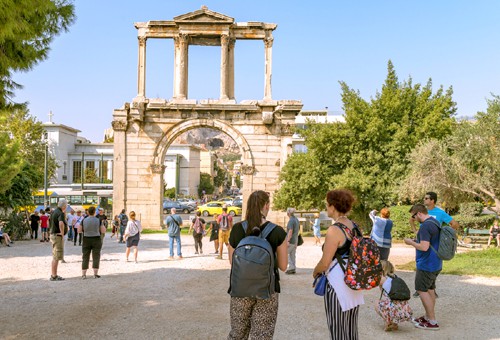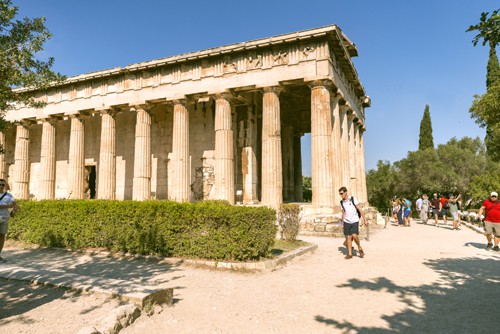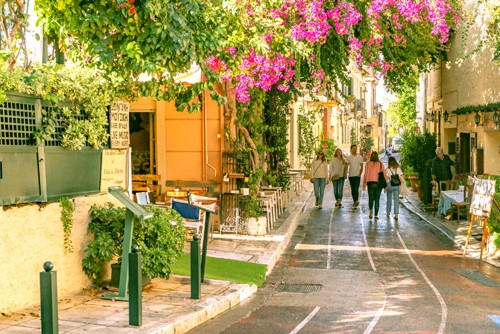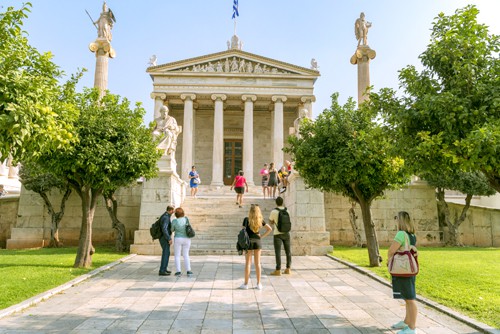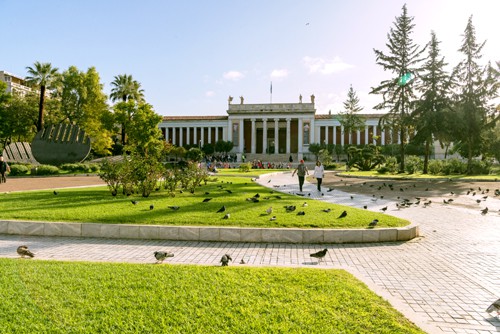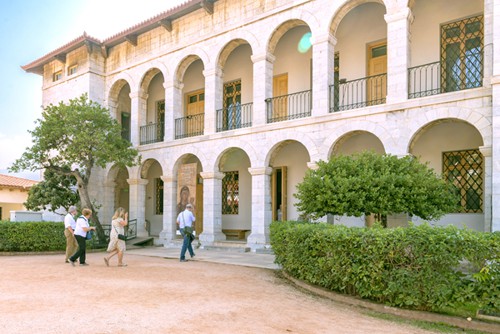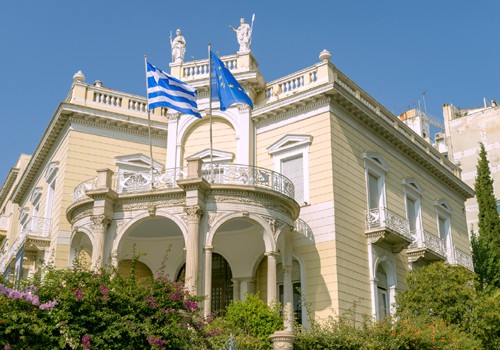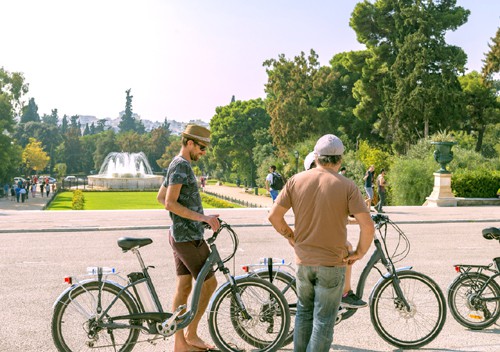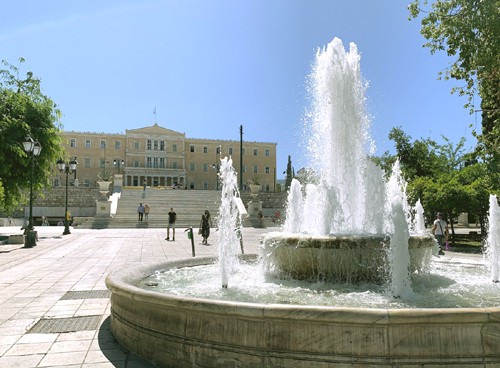Our places – ATHENS GUIDE
Our guide to Athens
Athens is an ancient city over three thousand years old & emerged as the most powerful of the Greek ‘City States’. Like Rome or Istanbul- Constantinople, Greece’s modern Capital is also a place where you can see this long history in the city’s streets. Any walk is likely to pass ruins & monuments from classical Greek such as Hadrian’s Arch & the Temple of Zeus, or the later Roman monuments like the Agora or Temple of the Winds. All ofcourse overshadowed by the Acropolis.
With so much contributed by the Ancient Greeks to world culture, it’s natural these are first stops for the visitor. However, the peak of the Ancient Greek classical period lasted barely 100 years with equally tumultuous changes to follow. The next 1500 saw the Roman Period, Byzantine Empire, and Ottomans all leaving their marks. The Islands were no different with an even more exotic succession of invaders from Venetians to Egyptians.
Todays Athens
Modern as today’s Athens remains, one of my regular Café’s is opposite a 1000-year-old Byzantine church. When visiting friends I buy the traditional Greek sweets from one of the many ‘zaccharoplastios’ that have a heavy Ottoman influence. I enjoy the streets Architectural styles imported from Italy, the Cyclades, or the 19thC. A mix that gives much of the center its charm.
Life in Athens is still lived outdoors with shops still open into the late evening, adding to the vibrant pace of life. There are also a great many Restaurants & bars to enjoy and the city is still very family-friendly. A great place to slow down & enjoy the atmosphere.
What to See & Do in Athens
Our walking tours with Licensed guides are ideal to combine the Acropolis with another site such as the Acropolis Museum or a City Walk; Whilst our ‘Essential Athens‘ tours by a vehicle cover all the central sites in a Half-Day. You can see all our Athens Tours Here for details & Direct Booking. Our tours also give you the choice to extend your tour to a Full-Day with a visit to Cape Sounion & the dramatic clifftop Temple of Poseidon, or Ancient Corinth in the Peloponnese. However, if you’ve been there & done that, why not let one of our tour leaders show you Athens as only they know it, or see our dedicated ‘Off-the-Beaten-Path‘ page.
4 of the most popular Athens Tours are listed below, but you can see all Tours from our main menu or View Here
Do
Greece is a mecca for food lovers and Greeks are obsessed with food and wine which forms a central part of local culture. Quality is high with great depth and a variety of traditional dishes. So if you want to expand your knowledge an informative & fun option is to choose one of our Gastronomy tours which combines the sights & sounds of the main markets & eateries with the most pretty routes of the old town. Alternatively, choose a visit to a local Olive Farm with a Tasting or workshop. Just View our dedicated Gastronomy page for more.
If you want something more active then our Activity Tour Page has lots of options. You could choose a bike ride to the Athens Riviera with some beach time and for running enthusiasts perhaps time your visit with one of the many Marathon events in the city.
Tips from the Penguin
Don’t Miss
The simple pleasures of life. Try a cold coffee ‘Freddo‘ in the shade as you watch the people pass by or the wonderful varieties of ‘Mezethes‘ (many small dishes) the typical lunchtime cuisine. Athens comes alive in the evening & is at its most beautiful. Don’t miss the pleasure of a simple stroll to the local bakery & enjoy the sights & sounds of this vibrant city & its people.
Guide to the main Athens sites
The Acropolis
Most Ancient Greek cities had an ‘Acropolis’ which comes from the Greek words ‘akron’ or high point, and ‘Polis’ or city. However when we talk about the Acropolis now we are universally understood to refer to the archetypal Acropolis of Athens which is famous for its Temple of the Parthenon and a listed UNESCO world heritage site.
The Acropolis has a number of structures within it. Inhabited from the Bronze age, when viewed from below you will notice the entire rock has a curtain wall surrounding it. This is a fortification from the Ancient Mycenean Civilization that preceded the classical Greek times. The structure is called a cyclopean wall. Named thus because of the large stone blocks used in its construction that it was though, even by the Greeks living in later Classical times, that only the mythical Cyclops could lift. It is an impressive 760 meters in circumference and up to 6 meters thick in some parts. It is the only remains of the Mycenean structures that once would have been there and which would have included a Mycenean palace, or ‘Megaron.
On entering the Acropolis you will pass through the Propylaia, or entrance gate, above which is the reconstructed Temple of Athena Nike. On the top of the Rock, there remain two temples dating from the classical period of Greece. Firstly, the Erechtheion, which was dedicated to both the goddess Athena and Poseidon. Secondly, the Parthenon which was dedicated to the Goddess Athena and is considered the pinnacle achievement of Art and engineering by the Ancient Greeks. The Parthenon survived largely up until 1687 when it was partially destroyed by a gunpowder explosion during a Venetian siege of the Ottomans.
The 17000 seat Theatre of Dionysus built around 580 BC is also located at the foot of the Acropolis. It was in continuous use up to Roman times after which it was left to decay. The Odeon of Herodes Atticus constructed in 161 AD continued performances and is still in modern use with an extensive program of music & plays each summer during the Athens Epidaurus Festival.
New Acropolis Museum
The New Acropolis Museum opened in 2009 and replaced the old one due to its limited size and the need to have a suitable home for the remaining Parthenon Marbles housed in the British Museum.
A state of the Art Museum it showcases the finds from the Acropolis from the Bronze age up to Roman and Byzantine times and is constructed on pedestals underneath which, layers of the ancient city have been uncovered and are also open to viewing.
Its top floor reflects the Acropolis opposite and its internal space represents the sides of the Parthenon impressively. This is a significant and large museum & normally takes over an hour to see at least with many additions like video recreations and models both bringing to life & informing the visitor about the History of the Acropolis. It is best seen together when visiting the Acropolis a short walk away.
The Temple of Zeus
One of the largest ancient temples ever built, the Temple of Olympian Zeus was started in the 6th century BC but not completed until over 600 years later in the second century AD during the time of the Roman emperor Hadrian. Not long after its completion, the temple was destroyed and its ruins often used as material for other buildings. The Roman Emperor Sula had also transported some columns back to Rome to be reused in the Temple of Jupiter on the Capitoline Hill.
Unlike the nearby Arch of Hadrian and the Parthenon, which were made of local Marble from mount Pentelis in Athens, the temple of Zeus was made from weaker local limestone rock and has therefore not weathered the test of time as well. Despite this, its enormous remaining columns and foundations will still leave the visitor with a feeling of its impressive original scale.
Arch of Hadrian
The Arch of Hadrian is a typical Roman triumphal arch was built by the people of Athens around 130 AD to commemorate the Roman Emperor Hadrian, a great benefactor of Greece who respected its history and antiquities.
It is located centrally by the Temple of Zeus at the edge of the National Gardens and also very close to the Acropolis & Acropolis Museum from the Athens ‘Acropoli’ underground Metro stop. It is thought to be positioned between the old & new areas of the Roman city and on each side bears an inscription naming both Theseus and Hadrian as founders of Athens.
The Ancient Agora
For centuries, the Ancient Agora in Athens was the central hub of life in Athens. It formed the main market but also the political hub with many official buildings within its bounds as well as important symbolic monuments, shops, and skilled workshops. Many temples stood in the Agora dedicated to Zeus, Apollo, and Ares, and philosophers such as Socrates and Aristotle taught there. The mathematician Pythagoras and the father of modern medicine, Hippocrates also shared their ideas at the Agora. During a period when many of the great ideas of modern Europe such as democracy and Stoicism were formed & first tested, the Agora was both birthplace & testing ground.
In 490 BC the area was extensively destroyed by the Persian invasion but was rejuvenated again in the 5th century as Greece again flourished. One of the main structures still standing from that time is the Temple of Hephaestus constructed from 450 BC and dedicated to the God of metalwork as appropriate in an area of the Agora that housed many metal foundries. In Christian Roman times, many of Greece’s classical monuments were destroyed by Christian zealots or were deconstructed as a source of pre-cut stone used in the construction of modern churches & other buildings. This temple escaped because it was in later times converted to a Christian church and is now the most complete Classical Doric Temple remaining.
A second main structure in the Agora was the Stoa of Attalos which has been reconstructed, and now houses the Museum of the Agora. A long colonnade, the stoa was a modern equivalent of a shopping arcade with spaces for merchants to rent and a shelter on hot sunny days.
Panethenaic Stadium
Originally built in 330 BC as a racing stadium set in a valley between two hills, the Panathenaic Stadium was built in its current form of marble in 144 AD by the Roman senator Herodes Atticus who was also responsible for the Odeon Herodes Atticus theatre at the Acropolis. It’s the only stadium in the world built from Marble. It hosted the opening & closing ceremonies of the first Modern Olympics in 1896 and is still used each year as the endpoint of the current Classic Marathon event in Athens each year. With a capacity of 50000, it is in regular use as a multipurpose venue.
The Plaka
The Plaka is one of the oldest areas in Athens and characterized by its narrow charming streets and beautiful neoclassic architecture that was preserved at a time when many similar old districts were demolished to make way for the modern tower blocks or ‘polykatoikia‘ as more people moved into the city.
Full of souvenir shops, at the foot of the Acropolis, and surrounded by countless monuments this is the ideal place to go back in time & enjoy a coffee or mezedes at one of the many nice cafes or restaurants during your visit to Athens.
Athens Trilogy
The National Library, the Academy of Athens, and the University of Athens termed the Athens Trilogy, are three Neoclassic mansions built in the nineteenth century and form the center of intellectual life in Athens. Close to Syntagma square, they can be reached from the Panepistimou Metro station.
National Archaeological Museum
Founded in 1829 and considered one of the world’s great museums the National Archaeological Museum is housed in a beautiful Neoclassic building neat the Excharcia area of Athens. The closest metro stop is Victoria Station. It houses the largest collection of Greek antiquities in existence. A major attraction, this Museum normally takes several hours or longer to see and is worth budgeting a half-day just for this.
Highlights are the significant Mycenean collection includes much of the famed Mycenean gold recovered from Ancient Mycenae in the Peloponnese including ‘Nestor’s cup’ and the famous gold death mask of Agamemnon. The bronze statue of Zeus recovered from the sea at Euboea, a statue of the God Asklepios, Bronze age Frescos from the islands of Akrotiri and Thira, including the ‘boxing boys’.
The most recent high profile addition has been the Antikythera mechanism. Recovered from the sea near the Greek island Antikythera it was designed by Grek scientists around 100 BC as a complicated mechanism with gears and dials that could be used to accurately predict astronomical positions and eclipses. It is described as the first analog computer & was centuries ahead of the oldest previously known devices.
The Byzantine & Christian Museum
From the central Syntagma square, a short 3 or 4-minute walk past the Parliament will bring you to the entrance of the Byzantine and Christian Museum which is housed in one of the finest villas built a the time of the newly founded Greek state in the mid nineteenth century. It also has beautiful grounds which hosts periodic exhibitions and & a nice café.
The largest collection of Byzantine art in existence with over 30000 works such as ceramics, skulptures, textiles, paintings, religious Icons and other elements organised into two parts.
The first showcases the early development of Christian art which developed after the legalization of Christianity in 313 by the Roman emperor Constantine and the important transition of the Capital of the Roman empire from Rome to the Hellenized East at Constantinople in 330 AD preceding the split into East and West Empires in 395 AD. Key events in European History.
The second part exhibits works produced from the 15th century and reflecting key events in the History of the Byzantine empire which came under various influences & pressures and how its influences continued into the 20th century.
Museum of Cycladic Art
A small & stylish museum easily reashed by a short walk from the main Syntagma square. The Museum of Cycladic Art is focused on the enigmatic early culture that flourished in Cyprus and the Cycladic Islands from around the third millennium BC.
This is the world’s largest collection of Cycladic art with around 3000 pieces including jewelry and ceramics, but most strikingly the characteristic smooth face sculptures which you will also see in many tourist shops around Athens. The location of the museum is also ideal, near all the central sites as well as other museums nearby like the Benaki Museum and Byzantine Museum. Well worth a visit.
National Gardens
The National Gardens were commissioned by Queen Amalia in 1838 and at its main entrance on Amalias avenue, the impressive rows of palm are thought to have been planted by her.
This is a wonderful oasis of peace in the center, less designed as a typical palatial layout but more a sprawling maze of paths set around points of focus such as hidden fountains, ancient ruins, a small zoo, and a marvelous collection of plant & tree species. Used by many runners and locals popping in to enjoy their lunch & a stroll it’s a great place to discover something new.
Syntagma Square & the Greek Parliamment
Constitution Square or Syntagma Square in Greek was named after the first constitution following the formation of the Greek state and transition of its capital from Nafplion to Athens in 1834. Syntagma metro station is a main transport hub & connects to all the metro lines making transport easy if you are not based in the center.
At one end of the square is the start of Ermou Street, the main shopping avenue in Athens, and at the end of this, you will find Monisteraki Square & the Plaka area. At the top of the square and across Amalias avenue is the Greek Parliament and National Gardens, the former Royal Palace and Royal Gardens before the abolition of the Monarchy. Every hour at the Parliament you can see the changing of the Guards, or Evzones in their traditional uniform.
Inspiration here !
Area Map
Follow us on Instagram
[instagram-feed]

